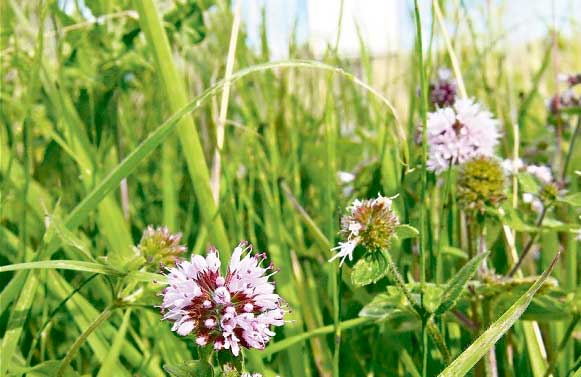A question we frequently get asked by those new to garden pond ownership is what to plant in and around their pond and how to merge the top of the pond liner with pond and surrounding garden.
Pond design (formal, natural or bog) and surrounding landscape generally dictate the type of aquatic plants chosen. Planting is not just about improving the aesthetic appeal of a pond. Aquatic plants also have a role to play in maintaining an equilibrium between nature and water. Oxygenated plants, for instance produce the oxygen used by fish to breathe and thrive in the pond. Plants added to a pond have to be maintained to control their growth and to keep them looking heathy.
In this article we will look at a plant that is easy to grow in a moist environment and one that is ideal for covering the edges of a pond where pond liner meets surrounding ground. The native British water mint is common to the waterways in UK and Northern Europe. Not only is it a lovely plant to have in the garden, it also has medicinal properties, the leaves add a delicious flavour to cooking and baking recipes. It also has anti-vermon and pest control powers – great for repelling flies and mice. In short, the water mint is the most attractive, environmentally friendly native water plant.
Water mint’s usefulness as more than a pond liner cover-up
- Important in erosion control – this would explain it’s usefulness when planted on the edges of the pond and thereby preventing soil from being washed into the pond by heavy rain or the steps of pond visitors.
- Attracts pollinators – from an environmental point-of-view this is great news as butterfly numbers in the UK are in decline.
- Pleasant scent – In Summer the mauve flowers give off a fragrant smell – a welcoming invitation to sit outside and soak-up the summer air.
- Pest control – repels mice and flies. Dining outdoors in Summer would be so much more pleasant if flies didn’t pay us respect!
- British – natural to our waterways and can be pruned and cut-back – spreads with long runners and therefore has the tendency to become invasive. Trimming back regularly will lead to thicker growth.
- Leaves add flavour to cooking and baking – added to a pot of boiling water. the leaves make a most refreshing cup of tea.

To prevent spreading, it is advisable to plant water mint in a container, which has good drainage. Do this by sinking the container into the ground around the edge of your pond where there is a constant flow of moisture around the roots.
For more information about adding plants in your garden pond or around the edges, visit our articles – Planting Pond Plants and Need Help Choosing – Planting-Aquatic-Plants.






Great internet websitewebsite! It looks very good! Maintain the helpful work!
Lotthar Matthaus http://forum.arlopus.com/index.php?action=profile;u=100165
Truly instructive… looking forward to visiting again
Ronaldo http://bbs.yixingtao.com/home.php?mod=space&uid=1101828&do=profile&from=space
Wow because this is extremely helpfulexcellent work! Congrats and keep it up
David Trezeguet http://bbs.hbylpay.com/space-uid-615150.html